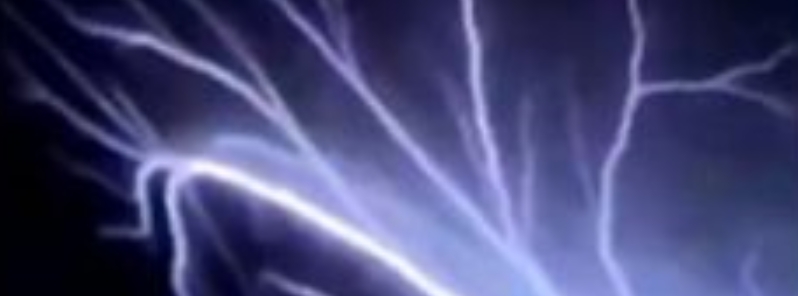Rare weather phenomenon ‘St. Elmo’s Fire’ captured by hurricane hunting plane over the North Atlantic

Crew aboard an aircraft used for hunting hurricanes captured a rare, spectacular weather phenomenon called St. Elmo's Fire while flying over the North Atlantic on February 15, 2020.
The phenomenon was captured by the NOAA42 Kermit crew as they flew across the Atlantic Ocean for the Ocean Winds research project. The flight was made as Storm Dennis approached Ireland and the United Kingdom on February 15.
While collecting data, the crew witnessed what appeared to be lightning strikes, but this discharge of atmospheric electricity was actually St. Elmo's Fire.
Luminous plasma generated between clouds and the ground in the vicinity of a thunderstorm's electric field causes this rare weather phenomenon, ripping molecules apart in a process also known as ionization.
Over the North Atlantic — Crew of #NOAA42 Kermit recorded St. Elmo's fire (weather phenomenon) during their 15 February winter storm flight for the Ocean Winds research project. #FlyNOAA #morethanhurricanes #weather credit: Lt. Josh Rannenberg, NOAA Corps pic.twitter.com/jUMMeaSYsi
— NOAA Aircraft Operations Center (@NOAA_HurrHunter) February 18, 2020
St. Elmo's Fire produces audible and visual effects like lightning and thunder– a crackling noise can occur along with blue and white glowing streaks.
However, the difference between the weather events is that St. Elmo's Fire is basically a glow of electrons in the air, while lightning is the movement of electricity from a charged cloud to the ground.
While St. Elmo's Fire is not necessarily dangerous, it can be a sign that thunderstorms are about to happen.
AccuWeather senior meteorologist Dave Samuhel also attested that the actual charge from the phenomenon is harmless, particularly for those surrounded by the aircraft's metal shell.
"St. Elmo’s Fire is a phenomenon that has occurred throughout human history. Before it was reported on planes, it happened on ships in the open ocean," said Samuhel.
"It happens when the charge of an object is much different than the charge of the air. Unlike lightning when huge bolts of electricity jump across a large distance from one charge to another, St. Elmo’s fire happens on a very small scale."
The phenomenon is named after St. Erasmus of Formia, the patron saint of sailors.
Featured image credit: Lt. Josh Rannenberg, NOAA Corps

I’ve read about this, but haven’t videos until now. Neat.